Which swan's which? How to tell the difference between swan species
Did you know there are 3 species of swan who live in the UK at least some of the year? The UK is home to three types of swan: mute, Bewick’s and whooper. Learn to identify the difference between the migratory swan species.
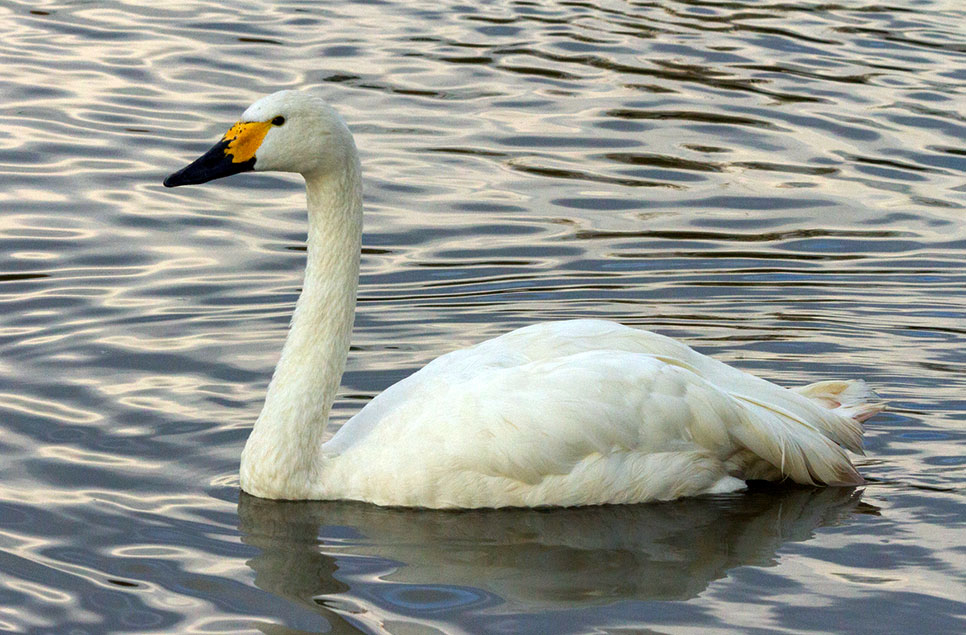
The UK is home to three types of swan: mute, Bewick’s and whooper. The latter two journey thousands of miles each year between their summer breeding grounds near the Arctic and the relative warmth of the UK winter. Mute swans stay here all year round.
Identifying the difference between the Bewick's and whooper swans is not straightforward, especially when they’re all in one place.
Dr Julia Newth, WWTs Principal Ecosystem Health Officer, is responsible for WWT’s long-term study of the Bewick’s swans. Part of her role is helping people who come into contact with migratory swans all along the flyway from Arctic Russia to the UK identify the difference between the species. She shares some of the most useful questions to ask yourself when trying to identify a swan:
How big is it?
Distinguishing the three swan species can be tricky even for the most experienced ornithologist. The first thing I look for is the size of the bird and the length and shape of its neck. The Bewick’s swan is much smaller and has a shorter and straighter neck than the whooper and mute swan. Whoopers hold their necks with more of a bend than Bewick’s.
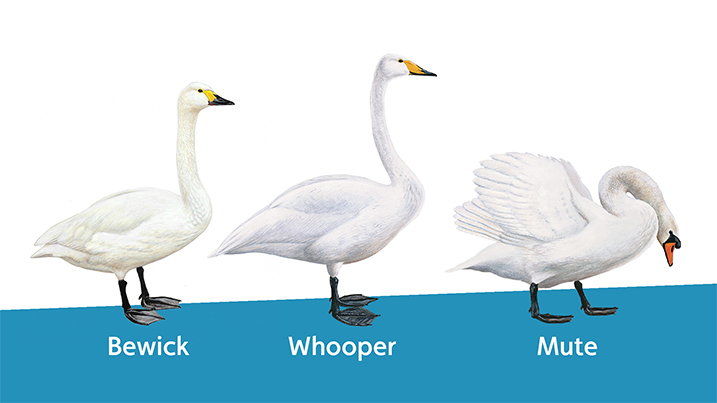
Is the bill orange or yellow?
If you are close enough or have some binoculars, you may notice that the Bewick’s and whooper swans have a yellow and black bill whilst the mutes have an orange and black bill. The mute swan also has a large mass at the top of its bill, and for this reason is known as a knob swan throughout most of Europe.
If there’s yellow, how much is there? And what shape is it?
We often say that the rounded shape of the yellow on the Bewick’s is reminiscent of a knob of butter while the yellow triangle on the whooper is more like a wedge of cheese! The whooper swan’s bill also has a flatter slope than the Bewick’s, which is gently curved.
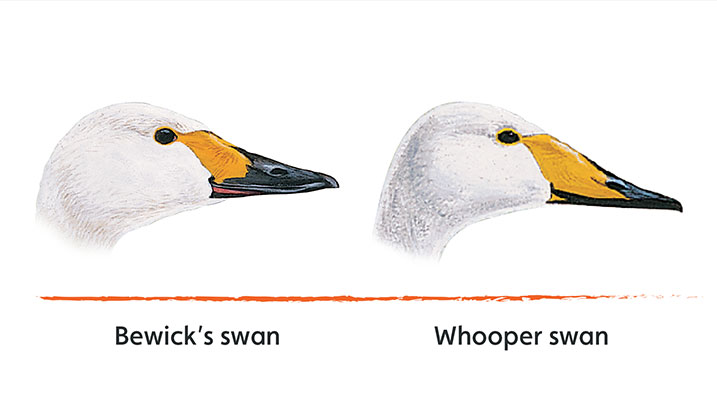
Decorate your desk with Bewick's
Our range of products featuring Peter Scott's own drawings of the iconic Bewick's swan bill patterns will let you practise your ID skills all day, while helping to protect the swan and other wetland species.
Shop nowWhat noise does it make?
Both Bewick’s and whoopers have a rather graceful bugeling, honking call with the whoopers adopting a slightly deeper tone. The mute swans are certainly not mute and spend much of their time communicating in coarse grunts.
Is it flying?
In flight, the Bewick’s swan has a slightly faster wing beat than the whooper although this is not always obvious. The wing beat of the mute swan is slow, heavy and loud - you often hear their coming before you see them!
Listen to the wing beats of a mute swan
Is it young or mature?
Young swans quickly grow to near full-size. It's essential for the migratory whoopers and Bewick's, which have to migrate with their parents at just a few months old. However, you can tell a young swan by its grey feathers. It’s hard to tell different species apart when they’re very young, so try and listen to their calls or see what adults are about as a clue to what species they are.
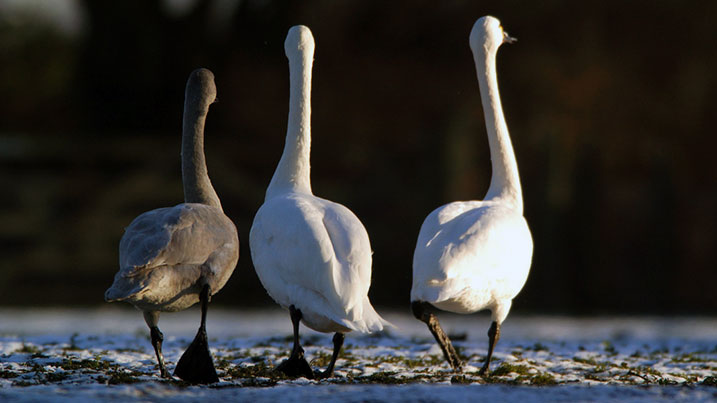
I’ve seen a black swan - what is it?
Black swans and black-necked swans are not native to the UK, but you are able to see them at some WWT reserves as part of our conservation breeding programmes of non-native species.
Why is swan identification important?
Across Europe there's little awareness of the different swan species, so few people realise how dramatically the Bewick's swan has suffered. Being able to tell the difference helps people support conservation.
It is even hard to tell a swan from a goose when they're flying. It's legal to shoot several goose species in Europe, so without good knowledge there's a real danger that Bewick's swans are mistakenly targeted.
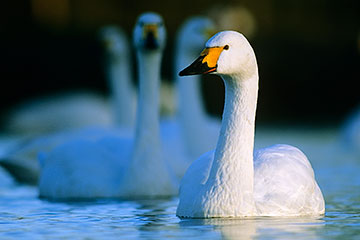
UK swan species
There are three species of swan native to the UK. Learn more about the swans that migrate to our shores every winter.
Find out more


